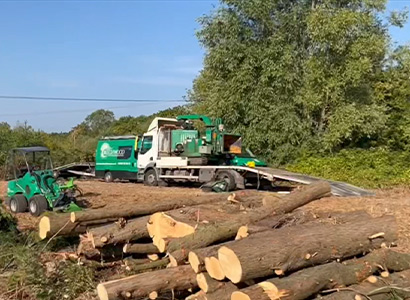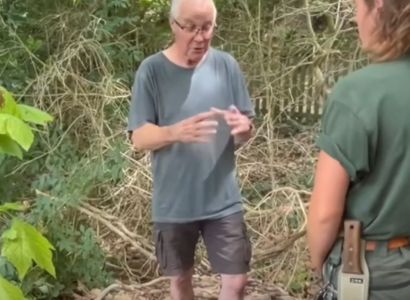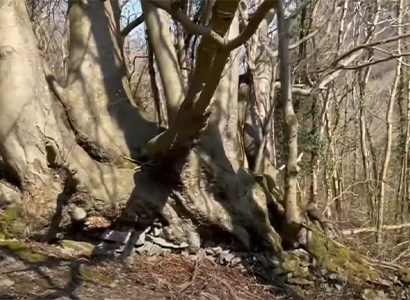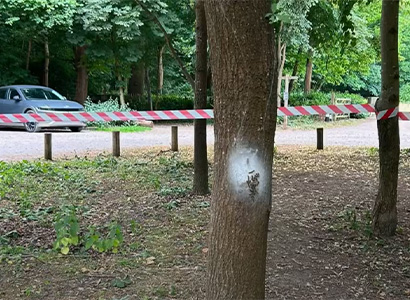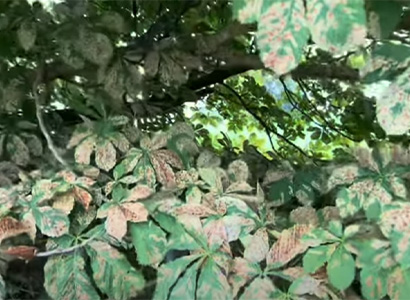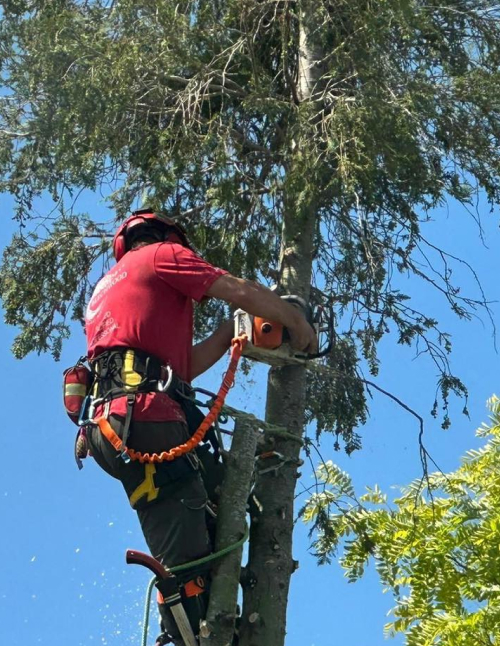Video Transcript
I’m here in the Yorkshire Dales, it’s really interesting because they’ve got loads of big ash trees, fantastic looking ash trees, and they’ve got lots, they’ve not really been cutting them down, so you get a really good view of what’s going on with ash dieback.
You’ll see some that are quite advanced, and then the others that are just looking like normal ash. But there are some cracking big ash trees here, and what a stunning landscape.
So we’ll have a look at a few in a bit more detail. Those ash there have a little bit of die back in the one on the left, but they’re generally alright. Then you come up the hill and that one’s been absolutely hit. These are big trees, in ash terms, the one next to it looks fine, a little bit of die back starting. It’s funny how the disease will affect one tree and then so close to it not really.
Then you’ve got the one in the middle thats really thin, I described that as stag heading, it’s advanced stages. That ones really early. That ones kind of late. And that’s in the middle. And this one you can’t really tell because it’s been really heavily pruned.
So this is classic ash, that actually is a leaf we call the compound leaf. So one of those is an entire leaf and these are called leaflets. And you can see very clearly the distinctive black buds. And you can see looking into that, how thick and dense that healthy lower crown is. And then this tree’s got the startings of ash dieback, just those little bits there.
So this little ash has got very classic ash die back. Normally the crown’s thin, and then after they thin this happens. So you get this dieback and you get this prolific growth forming and then that dies off and then the tree either dies, or sort of dies back into itself. At the moment, this isn’t a major threat as its over the river, so it’s only a threat to maybe a duck, but eventually it will succumb, which is sad.
So there’s been a fair bit of discussion about it only being small trees. You can see the tips of this here being affected, and it does seem to be in the southeast anyway, more prevalent on the smaller ash, but look at the size of that tree. 25 meter tree, stem diameter 600-700. That’s a big old call mature tree. And as you look through, you can see the effects of ashdieback on the ash in this copse just up there on the tops. Some of them are affected more than others, but all the way along there, big trees affected by it quite significantly.
I just think we don’t really know enough about it at the moment. Cracking view though.
So classic ash dieback here in the latter stages are almost dead. This tree, you can see that profuse growth that it’s tried to put out to deal with it and how sort of stone dead it is. Now the question is, now what happens? Does it fall to bits or does it fall over? Lots of people say bits just fall off. However, look at the one next to it. I’m not sure you do anything about this one actually, because it’s so weighted towards the river.
This one here again, you can see classic ash dieback where its failed at the base. So I don’t think it’s as clear cut as we think it is. This might be root damage here, definitely root damage there. But what’s caused it to go? Is it ash dieback? Is it the root damage? I suspect that’s the ash dieback looking at the state of the tree.
So I hope you enjoyed that video about ash dieback in the Yorkshire Dales. I hope it was informative. Often with trees, you raise more questions than you answer. But let’s see how it progresses.
Why Choose Beechwood Tree Care?
At Beechwood Tree Care, we are not just skilled in the work we do but extremely passionate about it too. This encourages us to go above and beyond for our clients, delivering the best possible care for their trees and landscapes.
We are highly experienced and certified arborists who operate across the region, delivering precise care and expert insights into your tree management.
Contact Us Today
If you are looking for local arborists to bring out the best in your landscape, Beechwood Tree Care is here to help. Contact the team today to request a consultation and to learn more about our services.

